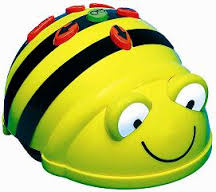

Hello Parents,
Welcome to another exciting school year. Thank You for volunteering. As STEAM is going through changes we need your help and support to provide our Tigers with the best. STEAM Committee will make official announcement on the year ahead details. Stay Tuned!!! Once again Welcome Back and Thank You.
STEAM Volunteers mark their scheduled classes on the calendars below. This helps ensure the availability of resources during the scheduled time. The password will be distributed at the training which takes place at the beginning of the school year each year.
| Device | Grades | Bot Reservation Link |
| Beebot | PreK UTK Grade 1 | http://thinfi.com/iy9 |
| Ozobot | Kinder | https://thinfi.com/09081 |
| Spheros | Grade 1 | https://thinfi.com/0907y |
| Probots | Gr 2 | http://thinfi.com/iya |
| Gr 3 | http://thinfi.com/iyd | |
| Gr 4 | http://thinfi.com/iyc | |
| Arduinos | Gr 5 | http://thinfi.com/s3t |
| Dash | Gr 2-5 | https://thinfi.com/0a2dq |
| WeDo | Gr 2-3 | https://thinfi.com/0bf9y |
STEAM Challenge Supply Reservation
| Grades | Supply Reservation Link |
| UTK | https://thinfi.com/0ca4i |
| Kinder | https://thinfi.com/0ca4n |
| Grade 1 | https://thinfi.com/0ca4o |
| Grade 2 | https://thinfi.com/0ca4p |
3D Printers
| 3D Printer | 3D Printer Reservation Link |
| 3D Printer @ Makerspace | https://thinfi.com/0diy4 |
| 3D Printer Move around Dingeman | https://thinfi.com/0diyk |
Bots and Grades
| Grades | Bots |
| UTK | All: Beebot |
| Kinder | All: Ozobot Maybe: Beebot |
| Grade 1 | All: Spheros Maybe: Ozobot |
| Grade 2 | All: Probot, Dash Maybe: WeDo |
| Grade 3 | All: Probot, Dash Maybe: WeDo |
| Grade 4 | All: Probot, Dash, Piper (Teacher led) Maybe: Spheros, WeDo |
| Grade 5 | All: Scratch, Arduino Maybe: Dash |
STEAM FAQ
___________________________________________________________________________________________________
The STEAM program aims to bring in Science, Technology, Engineering, Art & Math enrichment to all students at Dingeman. 2014-15 was our pilot year, and it was a huge success thanks to the amazing participation and commitment from our parent volunteers. As STEAM leaders, our goals are to not only teach students about early technology concepts, but also to get ALL students interested in science and technology, and feeling like it is something they are capable of doing today and in their future.
For more information, contact the STEAM Committee Co-Chairs: Karthika Ramesh
Lessons Outline
The goal of the Pre-K/UTK lessons is to introduce the students to the Bee-Bots, one of its simplest commands, and to have fun with technology.
Students are introduced to the basics of programming using the directional commands on the Bee-Bot . The lessons are aimed at developing problem solving skills and a sense of logic. The assignments are well integrated into the classroom topics of sequencing, ordinality, identification of shapes/patterns, etc.
The students work with both Bee-Bots and Pro-Bots this year. The Bee-Bot is used in programming assignments that utilize all its capabilities, while connecting to topics/activities in the classroom such as navigating the map of an area, addition, place values, shapes/patterns, etc. The students transition to introductory lessons on the Pro-Bot after five lessons with the Bee-Bot.
The students learn about sequential programming and repeat loops via the Pro-Bot. The first couple of lessons reinforce the use of linear measurements and directional commands. Next, the students decode compass directions and map them to directional commands on the Pro-Bot. A simple intro to optimization follows, with the Pro-Bot being directed to various stores to minimize the total cost. Next, students identify repeating patterns in given figures and learn to create them using repeat loops. We wind up the year with a debugging lesson, that allows the students to find errors and fix broken code.
The students continue to build up on their knowledge from the previous years. After a quick review of sequential programming and repeat loops, the students are introduced to the principles of modular programming and simple optimization. The programming assignments are designed to be practical applications of the Math concepts learned in the classroom, including area/perimeter, coordinate geometry, properties of quadrilaterals, etc. Next, the concept of reactive programming is introduced via a relay race that uses touch sensors on the Pro-Bot. The final assignment for the year focuses on honing the students’ debugging and editing skills.
The focus is on working with angular measurements and reinforcing the concepts of geometry from the classroom. The students start off with a review of programming concepts from the previous years, and work on problems involving area/perimeter. The next four lessons involve angular measurements using the Pro-Bot, and creating various types of figures using repeat loops & procedures. The students identify the properties of regular polygons, and develop a generalized algorithm to draw regular polygons. Next, the concept of reactive programming learned in the previous year is reinforced with sensor related projects. Lastly, students work on their debugging and editing skills, identifying and fixing broken code, and modifying code to achieve new functionality.
Scratch Programs:
The students move on to more advanced platforms - the Arduino microcontroller, used in conjunction with Scratch. The students learn new programming concepts, and apply it to topics learned in the classroom. The focus is on developing interdisciplinary projects that combine Computer, Electrical and Mechanical Engineering with various subjects such as Physics, Math, Biology, Music, etc., and represent some of the practical applications of the theory. The first two lessons are intended to familiarize the students with the Scratch platform. The next four lessons involve the Arduino, with Scratch being used as the IDE. The lessons are directly related to the topics of energy, force, electricity and food chains that are part of the grade 5 standards.
